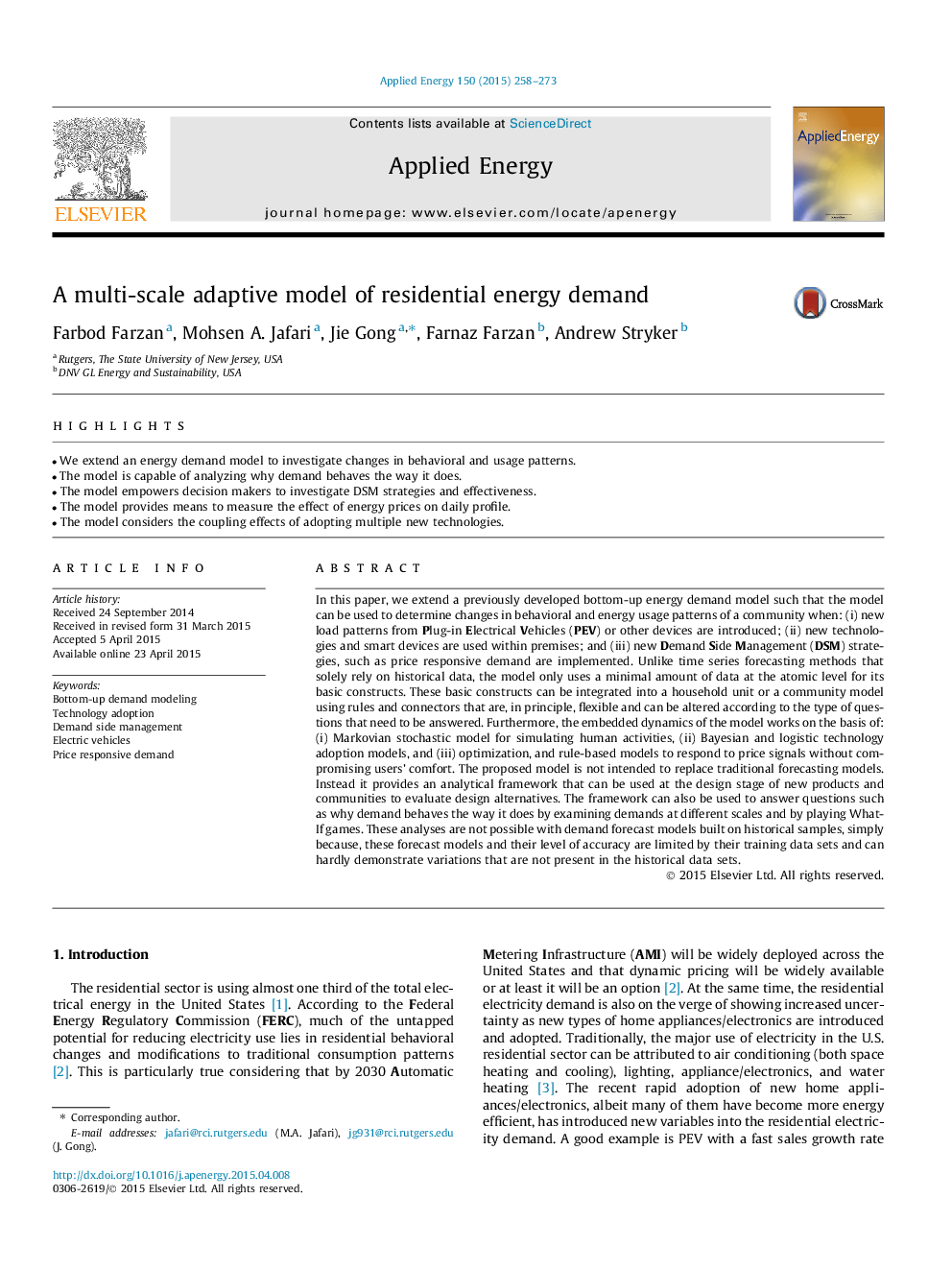| کد مقاله | کد نشریه | سال انتشار | مقاله انگلیسی | نسخه تمام متن |
|---|---|---|---|---|
| 242523 | 501875 | 2015 | 16 صفحه PDF | دانلود رایگان |
• We extend an energy demand model to investigate changes in behavioral and usage patterns.
• The model is capable of analyzing why demand behaves the way it does.
• The model empowers decision makers to investigate DSM strategies and effectiveness.
• The model provides means to measure the effect of energy prices on daily profile.
• The model considers the coupling effects of adopting multiple new technologies.
In this paper, we extend a previously developed bottom-up energy demand model such that the model can be used to determine changes in behavioral and energy usage patterns of a community when: (i) new load patterns from Plug-in Electrical Vehicles (PEV) or other devices are introduced; (ii) new technologies and smart devices are used within premises; and (iii) new Demand Side Management (DSM) strategies, such as price responsive demand are implemented. Unlike time series forecasting methods that solely rely on historical data, the model only uses a minimal amount of data at the atomic level for its basic constructs. These basic constructs can be integrated into a household unit or a community model using rules and connectors that are, in principle, flexible and can be altered according to the type of questions that need to be answered. Furthermore, the embedded dynamics of the model works on the basis of: (i) Markovian stochastic model for simulating human activities, (ii) Bayesian and logistic technology adoption models, and (iii) optimization, and rule-based models to respond to price signals without compromising users’ comfort. The proposed model is not intended to replace traditional forecasting models. Instead it provides an analytical framework that can be used at the design stage of new products and communities to evaluate design alternatives. The framework can also be used to answer questions such as why demand behaves the way it does by examining demands at different scales and by playing What-If games. These analyses are not possible with demand forecast models built on historical samples, simply because, these forecast models and their level of accuracy are limited by their training data sets and can hardly demonstrate variations that are not present in the historical data sets.
Journal: Applied Energy - Volume 150, 15 July 2015, Pages 258–273
